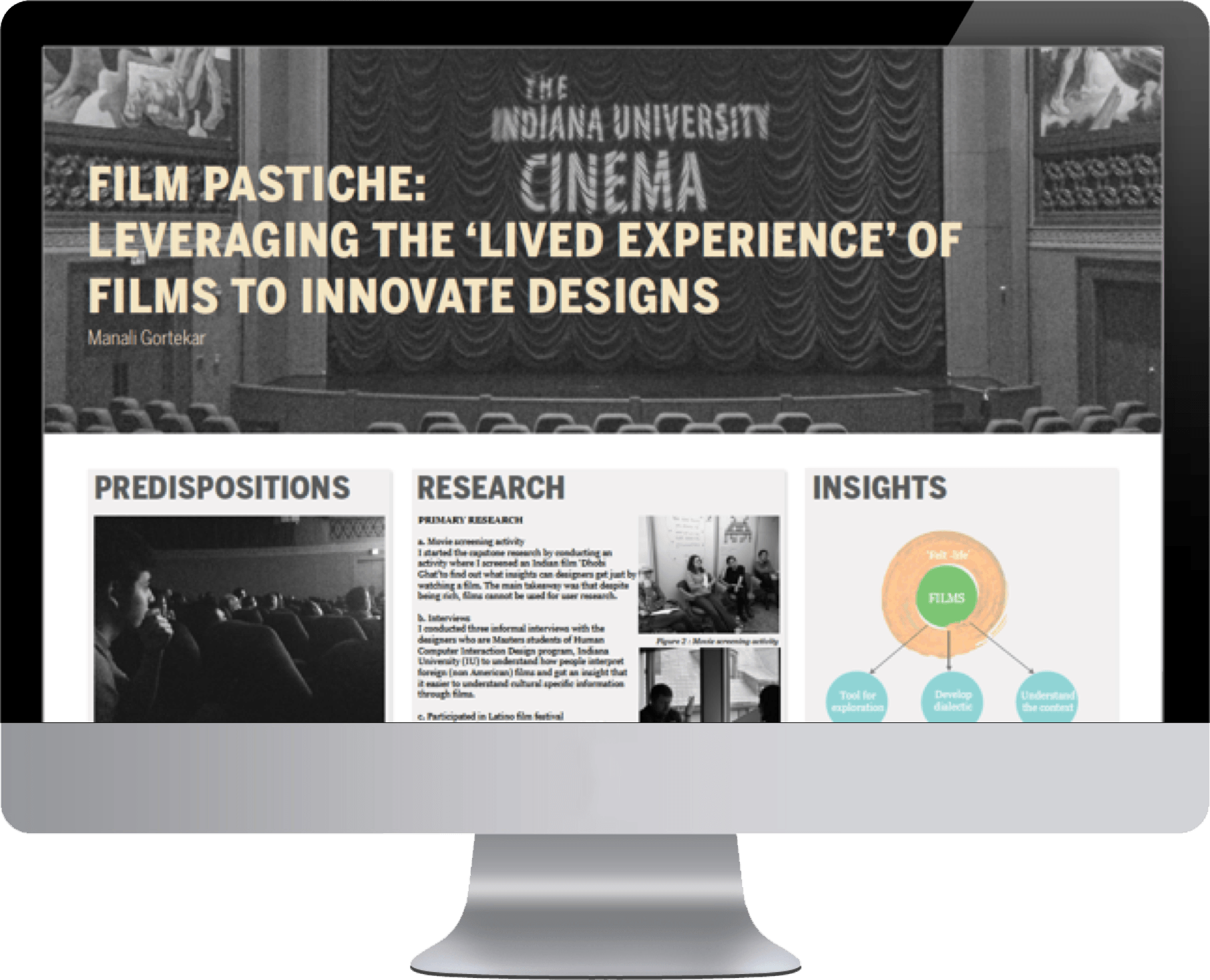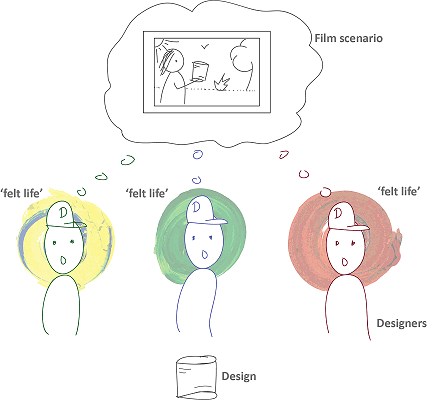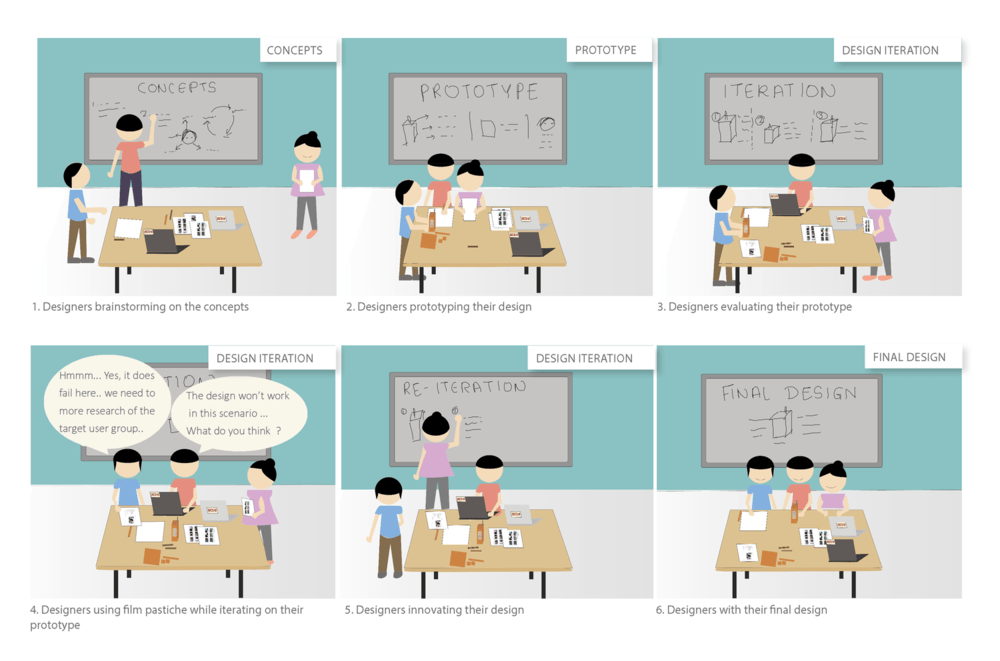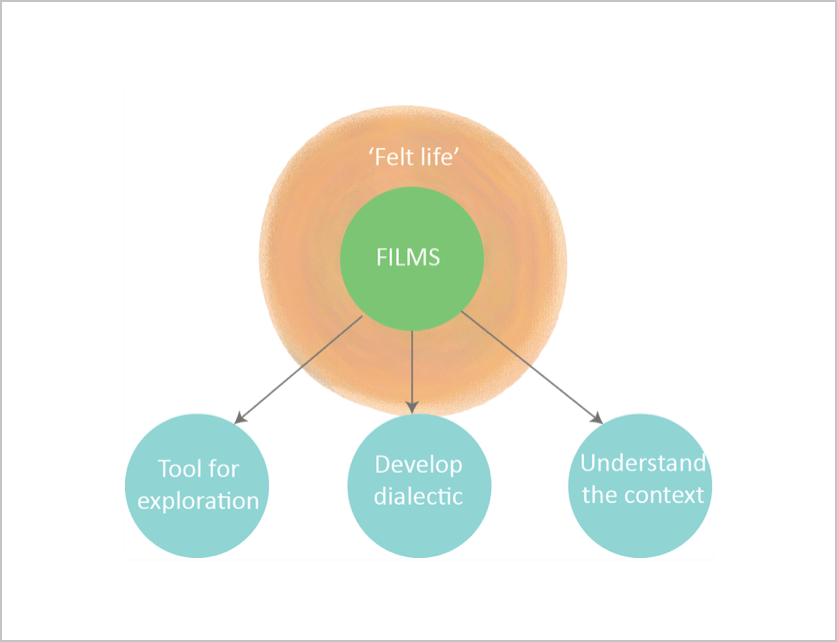Project Description
Film pastiche is a design innovation tool inspired from films. The goal is to use film scenarios as a rhetorical devices during design iteration phase.
This project was my master's thesis for the final semester in Human Computer Interaction design program (HCId) at Indiana University. It was an individual project done under the guidance of HCId faculty Prof. Jeffery Bardzell and Prof. Eli Blevis and was picked as one of the top 15 projects among 40 others in the class.
Duration: Jan 2014 - Apr 2014
Click here to view the poster
Film Pastiche Thesis (For better experience, view in the full screen mode)
What
Film pastiche are the scenarios inspired from a film scene.
They seek to explore and interrogate sensual, emotional, social and cultural aspects of people’s relationships with technology
Why
They are used to explore ‘felt-life’ issues within the social and cultural context of using a technology. It can be valuable in ‘design iteration’ phase since they engage the designers to brainstorm on a hypothetical scenario where film characters use their technology.
How
I have positioned myself as a strong subject for generating pastiche scenarios by picking up a few instances from Indian films based in Mumbai that resonate with me.
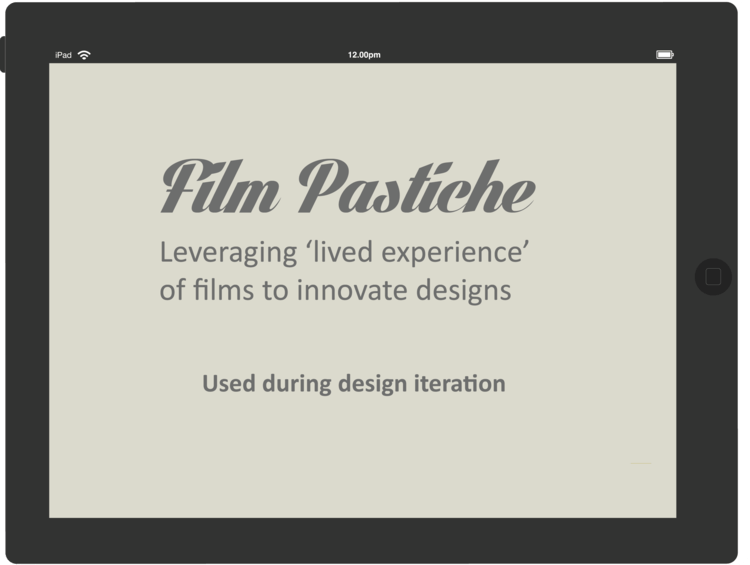
Slide title
1. Introduction Screen
Button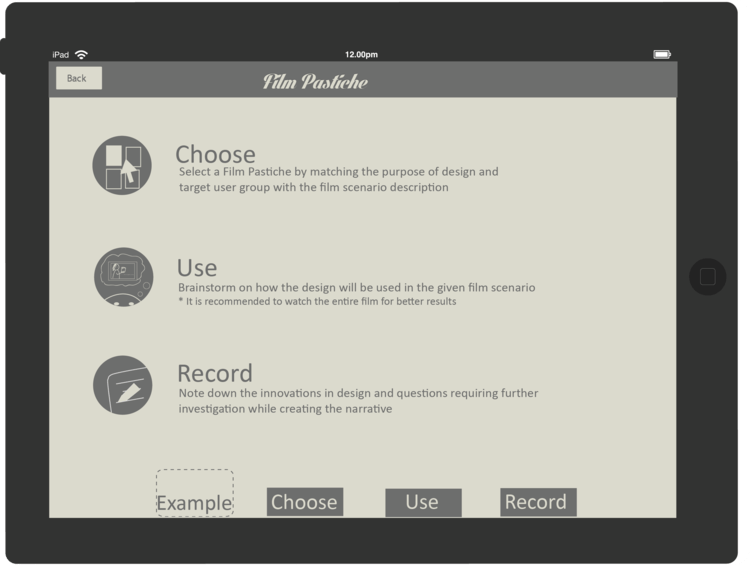
Slide title
2. Home Screen
Button
Slide title
3. Choose Pastiche Screen
Button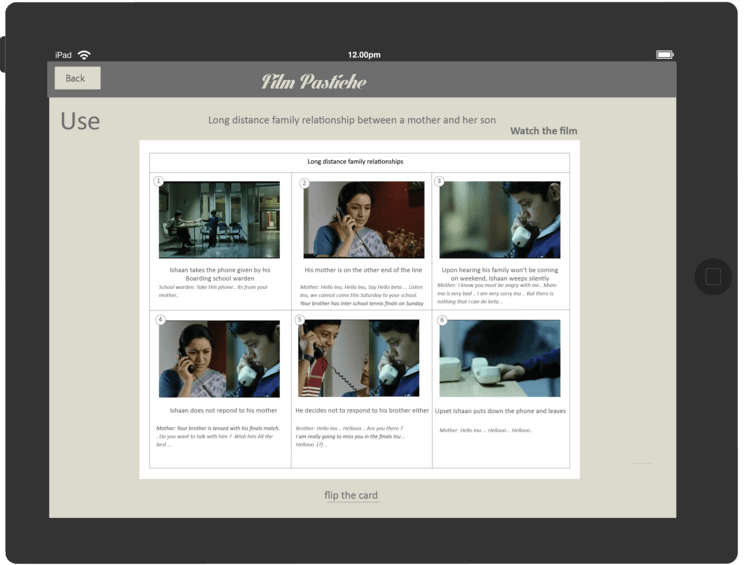
Slide title
4. Film Pastiche(1)
Button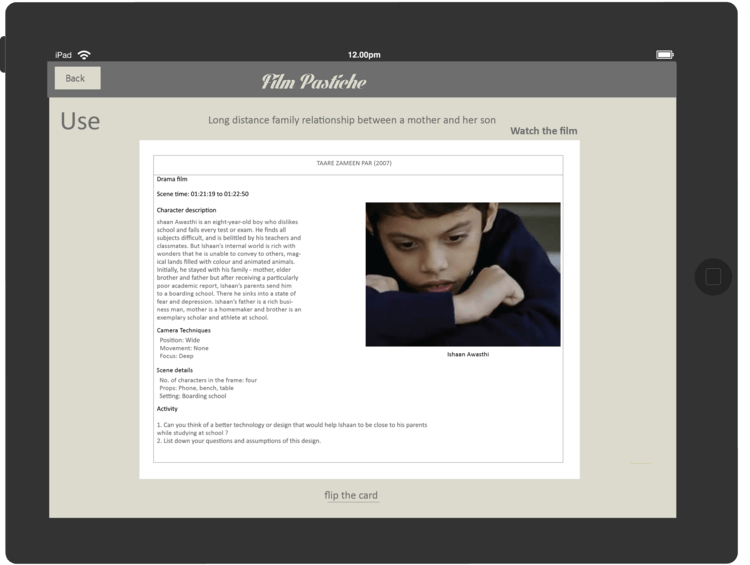
Slide title
5. Film Pastiche(2)
Button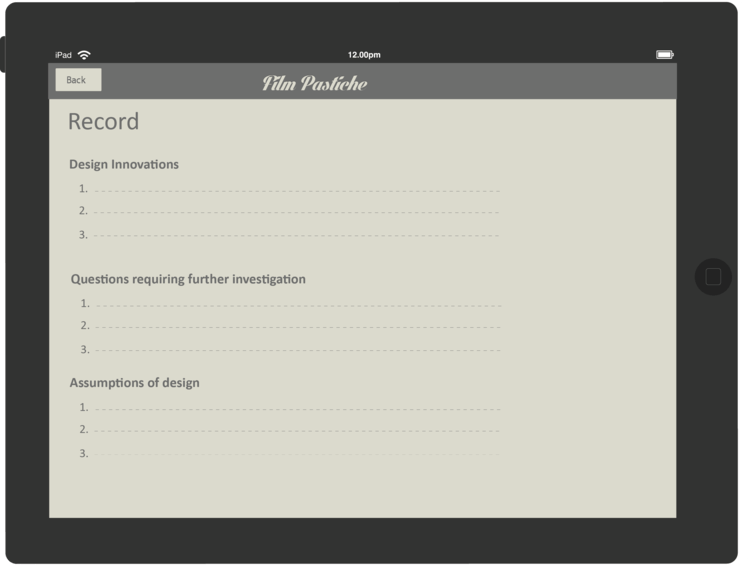
Slide title
6. Record Screen
Button
Choose
In order to use this app, designers need to first choose a pastiche scenario based on the purpose and target user group of the design.
Use
After choosing a scenario, they can continue with the narrative of film scene to brainstorm on a hypothetical scenario where film characters use their design and come up with new design innovations, questions to investigate further and the assumptions regarding the design.
Record
Lastly, designers can record these findings to track their design process.
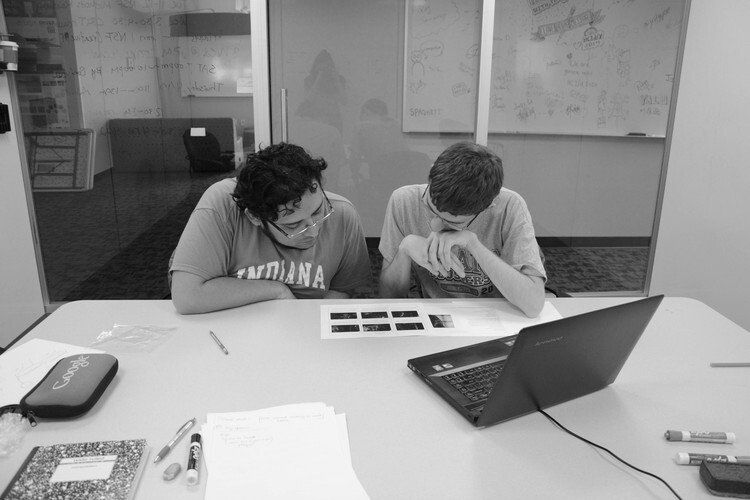
Slide title
1. Exploratory testing
Button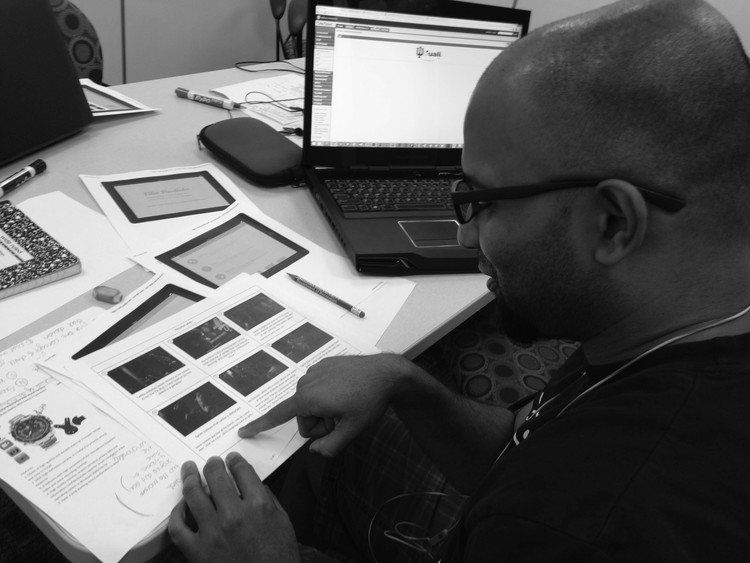
Slide title
2. Usability testing
Button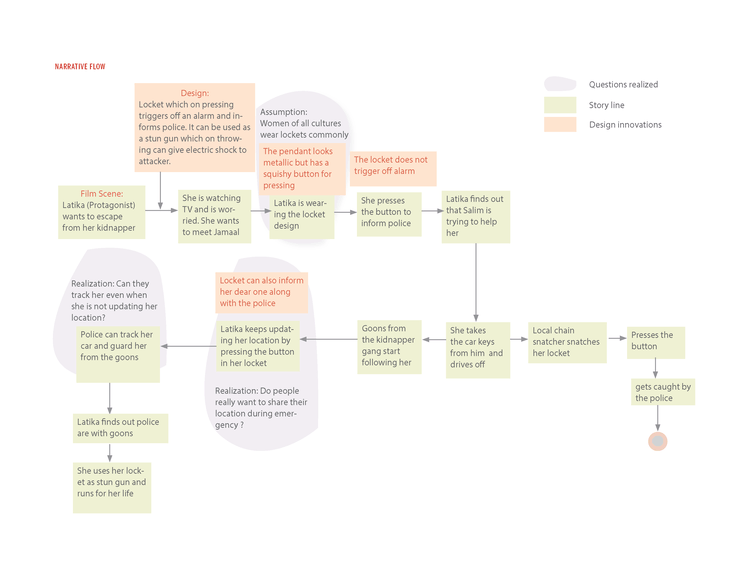
Slide title
3. Testing output
Button
Conducted two exploratory testing of the concept and a final usability test of the app with designers.
Future Strategy
a. Automatic generation of a film pastiche
b. Collection of similar scenarios from films
c. Rigorous testing
d. Development of the app
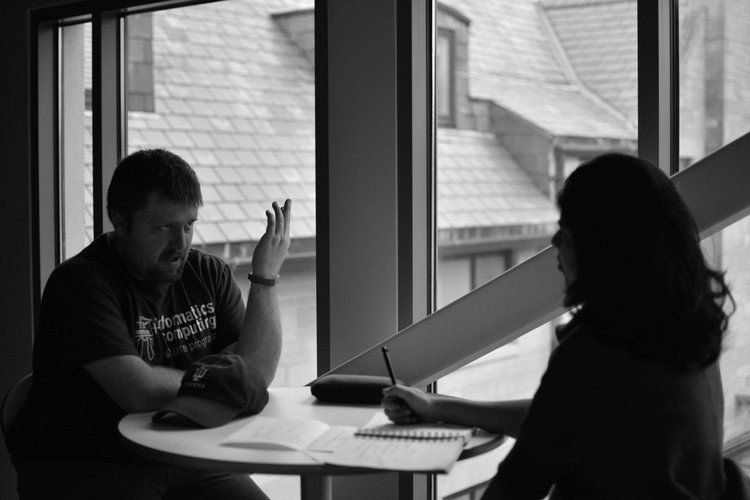
Slide title
Interviews
Button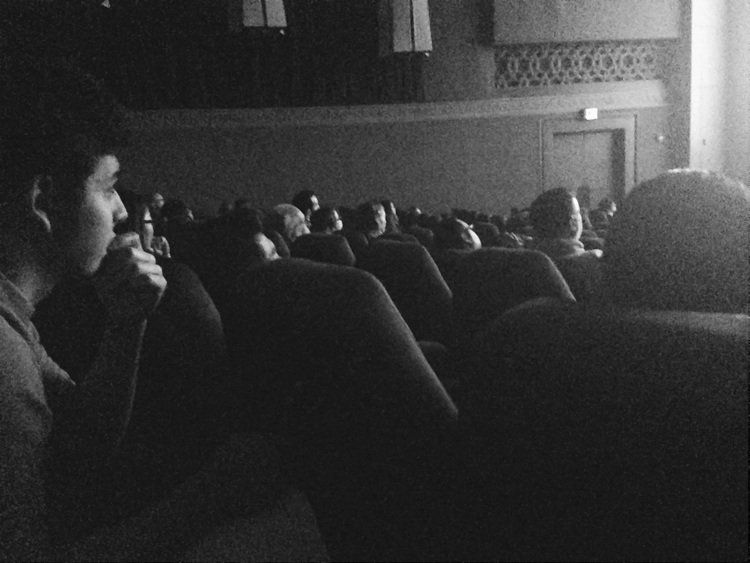
Slide title
Participant Observation
Button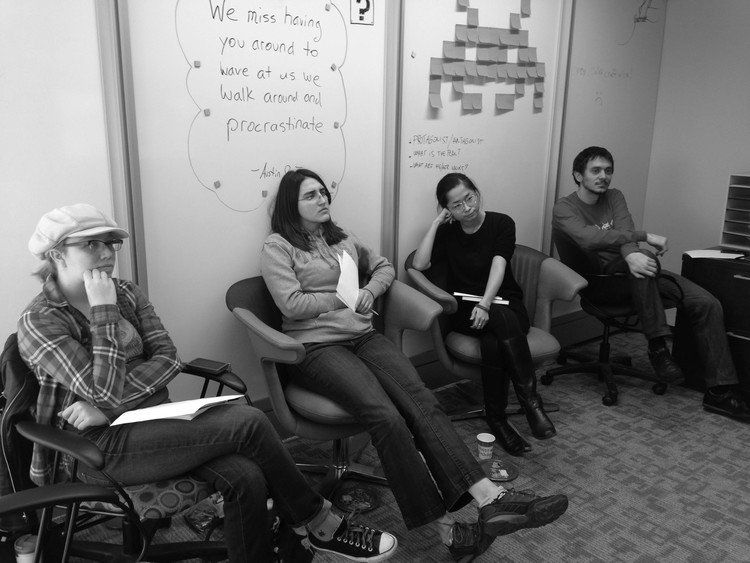
Slide title
Movie screening activity
Button
Primary Research
a. Movie screening activity
I started the capstone research by conducting an activity where I screened an Indian film ‘Dhobi Ghat’to find out what insights can designers get just by watching a film. The main takeaway was that despite being rich, films cannot be used for user research.
b. Interviews
I conducted three informal interviews with the designers who are Masters students of Human Computer Interaction Design program, Indiana University (IU) to understand how people interpret foreign (non American) films and got an insight that it easier to understand cultural specific information through films.
c. Participated in Latino film festival
I watched my first Latin American film at IU Cinema to realize that watching an entire film is not the best
way to understand a non familiar culture. I also conducted a survey with five film viewers and found out that everyone interpreted their film watching experience differently.
Secondary Research
Three secondary resources that influenced my direction for this capstone:
a. Interaction criticism
An introduction to the practice by Jeffery Bardzell - It helped me understand the notion of ‘subjective knowledge’ of a designer and the role it plays in design. The final structure of film pastiche is adapted from the Interaction criticism framework.
b. Critical and Cultural approaches to HCI by Jeffery Bardzell
I got an overview on the importance of criticism and cultural theory in HCI field. It had a note on ‘Pastiche scenarios’ as a cultural HCI methodological innovation that gave me the direction for capstone.
c. Pastiche scenarios
Fiction as a resource for user centered design by Peter C. Wright and
Mark K. Blythe - I got better understanding of Pastiche scenarios and some examples.
Insights
a. Films as a tool for exploration
Films can be much more than a mere form of entertainment. It can be a means to explore, understand and present the everyday lives of people.
b. Films to develop dialectic
It is important for designers to develop a dialectic in order to bridge the gap between user research and design perspectives. Films facilitate such dialectic.
c. Films to understand the context
Disseminating culture specific information through the medium of films is easier.
d. Design could leverage the fiction world to interrogate interactions with technology in richer ways
Through pastiche scenarios designers can reflect on their ‘lived experience’ of the fiction world to explore social and cultural issues of using a technology.

